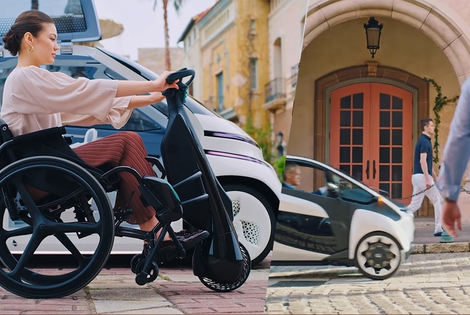
Milan has announced one of Europe’s most ambitious mobility schemes, known as Strade Aperte (open roads). Its goal is to reduce cars in phase 2 of the lockdown by increasing bike lanes and pedestrian areas.
Sustainable, two-wheel mobility is triumphing in Copenhagen. After years of investments, policies, and infrastructural changes, bikes now outnumber cars in the city centre. The website Copenhagenize has released data linked to the number of vehicles entering the city centre, which are monitored by the city’s administration on a daily basis. Last year, 265,700 bikes have entered
Sustainable, two-wheel mobility is triumphing in Copenhagen. After years of investments, policies, and infrastructural changes, bikes now outnumber cars in the city centre.
The website Copenhagenize has released data linked to the number of vehicles entering the city centre, which are monitored by the city’s administration on a daily basis. Last year, 265,700 bikes have entered the city, while cars amounted to 252,000, registering an increase of 35,080 bikes.
As the infographic shows, Danish people prefer bikes and public transports to move across the city. The website also highlights that many cars are still sold in Denmark, despite buying and selling have decreased by 25 per cent.
In Copenhagen, 56 per cent of the citizens use bikes, 20 per cent use public transport, including buses, trains, and metro, while only 14 per cent choose cars to reach schools and workplaces. “Copenhagen’s choice of investing in bikes has an economic nature. They’ve figured out that to make a city efficient, people need to move rapidly, and bike is the most rapid mean,” said Paolo Pinzuti, editor at Bikeitalia.it and head of bike development at Bikenomist.
Investments are key to success. The municipality has invested 134 million euros over a decade (more than 13 million per year) in infrastructures. Bike lanes, parks designed for intermodality, and 17 new bridges dedicated solely to bikes have contributed to this unprecedented result, so much so that cars can no longer compete. “Public transports, if efficient, are equally rapid. But they have higher costs compared to bikes and, most of all, don’t solve the issue of the last kilometre from the bus or train stations to one’s house,” adds Pinzuti. “Bikes are thus the cheapest mean of transport, are affordable to all, and bring major benefits in terms of efficiency”.
Siamo anche su WhatsApp. Segui il canale ufficiale LifeGate per restare aggiornata, aggiornato sulle ultime notizie e sulle nostre attività.
![]()
Quest'opera è distribuita con Licenza Creative Commons Attribuzione - Non commerciale - Non opere derivate 4.0 Internazionale.
Milan has announced one of Europe’s most ambitious mobility schemes, known as Strade Aperte (open roads). Its goal is to reduce cars in phase 2 of the lockdown by increasing bike lanes and pedestrian areas.
Formula 1, the world’s most important auto racing championship, has decided to turn the page and aim for carbon neutrality with the support of its teams, drivers and the whole racing circus.
Toyota and LifeGate began telling the story of hybrid mobility back in 2006, now, on the road to the Tokyo 2020 Olympics, they’re still treading the path of sustainable mobility. Here are the main steps of the journey.
Germany’s first solar bicycle lane could be the prototype for the roads of the future. The photovoltaic tiles melt snow and ice, and are capable of absorbing noise.
The Vespa is back in an electric version. Production has just started and the first models can be reserved online starting from October.
The city of Utrecht, in the Netherlands, is home to a bridge for cycling and walking that stretches over roof garden of a Montessori school. This project enhances practicality and will allow families to bring children to school by bike, passing through green areas. Despite their functionality, bridges are often seen as an infrastructure that is
The Lego hair bike helmet is the latest Internet craze. For now it’s just a prototype but production on a large scale will probably start soon.
Just as fires often give way to new growth, after the Dieselgate scandal, which saw Volkswagen cheating on US emission rules, the German car manufacturer radically changed course, beginning to focus on sustainable mobility. The German car company aims to propose thirty zero-emission models and produce at least one million battery electric vehicles by 2025. An ambitious mission
A luminous cycling strip has recently been unveiled in Poland: created in the town of Lidzbark Warminski, the cycling lane glows blue at night, a feast for the eyes. Features of the bike path The lane is divided into two sections – one for cyclists, one for pedestrians – so that everybody can enjoy such







